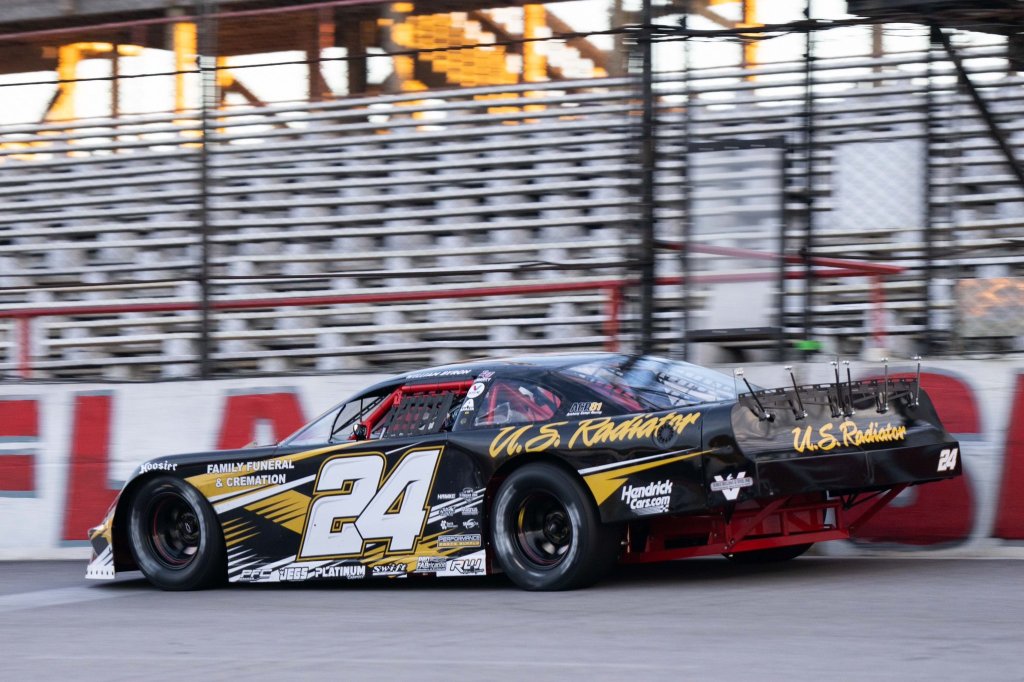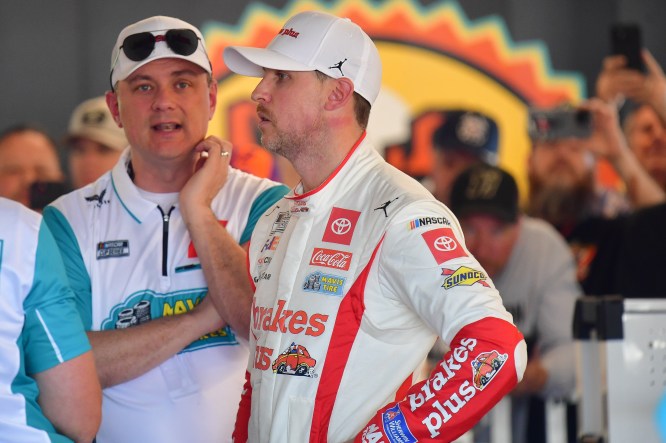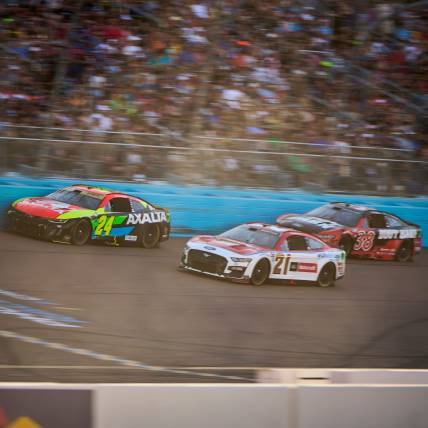
“Terrible; no change.”
Martin Truex Jr.
That isn’t what NASCAR, nor the community at large, wanted to hear after the first 50-minute practice session of the season that utilized the new short track rules package but it seems that these cars are still awful in dirty air.
This weekend at Phoenix Raceway features the debut of a new aerodynamic configuration, one that features a simplified rear diffuser and a one-inch taller spoiler, all in the name of creating more action on tracks 1.1 miles or shorter.
First, the rear diffuser is the components below shown in purple and red.

The red piece — the diffuser strakes have been removed completely — and the purple piece has been simplified in ways that can be viewed below.

The goal is to allow a faster trailing car to follow and pass a leading car that has clean air on single groove race tracks.
That has been the biggest battle NASCAR has faced with the third-year, seventh-generation Cup Series platform and no marginal change has seemed to make a difference. The car makes too little horsepower, has wider tires that make too much grip, big brakes that stop the car too easily and it creates a tremendous amount of aerodynamic wake.
NASCAR also has refused to give in to mounting racer pressure to increase horsepower.
This car also encourages drivers to downshift in the corner, meaning that any on-track mistake, can be mitigating by grabbing a gear and driving off the corner without penalty.
There was optimism that the simplified diffuser would clean up some of the dirty air but Truex says that didn’t happen on Friday.
“It felt similar,” Truex said. “I couldn’t honestly tell. The teams, engineers make the cars as close to balanced as they can, so I felt exactly like I did here last fall. Traffic, it still sucked. Will it be worse in the race? It will be different when everyone’s out there. Maybe it will be a little better, who knows.”
His Joe Gibbs Racing teammate, Denny Hamlin, said there might have been a slight improvement but that’s it.
“I would it say that it was probably a little bit better in traffic,” Hamlin said. “Very small from what I could tell. Nothing earth shattering. If you got caught behind somebody, you would really get caught behind someone, but that is typical of what we’ve had before.”
Hamlin said he did feel like he could complete a pass if he was considerably faster but not if they were largely equal.
Tyler Reddick said his car was ‘exponentially worse’ in traffic compared to last year.
What the drivers want, and what they haven’t had on these types of tracks since the new car debuted in 2022, is the ability to ride behind a car in front of them and be able to drive under to initiate a pass.
Right now, and for the past two years, as soon as a trailing car begins to catch a car ahead, they suffer what is called aero push. That means the car gets really tight and doesn’t turn left as easily as it should. That’s because the turbulence from the car ahead is disrupting the clean air a car needs on its nose to generate front downforce.
Until that turbulence can be mitigated, says Truex, the racing product will continue to suffer.
“Just the ability to turn better than somebody when you are behind them and get under them like we used to race,” Truex said of what he wants to see. “What I noticed in practice, I got within a car length or so, and just plowed out from behind the guy when I caught him.
“Doesn’t seem a whole lot different, but tomorrow a whole lot more cars on the track will be a a different data point, and we will see if it’s a whole lot different.”

William Byron spends a lot of his free time racing Super Late Models on short tracks around the country and says he enjoys the platform because a trailing car can easily close up to a leading car and drive under and around when overtaking.
What did he experience on Friday with the new regulations?
“I was pretty tight, but when I got within a few car links, I would slow down,” Byron said. “I couldn’t get within two or three car lengths of anyone, but I was pretty slow.”
Is that what Daniel Suarez experienced too?
“Yeah, it does,” he said of the aero push. “I was in traffic pretty much my entire first run, the first time out with tires, and the car actually felt great. And as soon as I got into traffic, I was like, ‘what the heck, what happened to my car.’
“But I saw cars coming to me, as well, with little newer tires, and they were doing exactly the same thing. It’s going to be a challenge, but I like the fact that we’ll have to manage our tires a little bit more.”
That’s the other major difference from last year to this year, that Goodyear has brought a softer compound on the right sides, in the hopes that drivers will have one additional element to manage that could create passing opportunities.
“It fell off a little bit more, which is good,” Suarez added. “I think it will produce good racing. I was in traffic quite a bit the first run of tires, and the car is very wild in traffic.. probably more than before.”

Hamlin said there were positive signs from the tires too, but what exactly does that mean?
“Anytime you can have lap time variability from good to bad and new to old, you are going to see more passing,” Hamlin said. “The more that we can create that, the more the drivers are going to have a hand in their finish in any given weekend for sure.”
Chase Elliott actually forgot they had made an aerodynamic and tire change. That’s how little difference he felt from November to Friday.
Ultimately, Elliott has been very adamant over the past three years that NASCAR’s biggest obstacle with the short track rules package isn’t so much the shifting, aerodynamic or tires but rather, the fact this is a spec car.
Outside of the engine and body, everyone drives identical cars and when everyone is so even, that makes passing increasingly difficult because everyone is running the same speeds. And if a driver finds an advantage on the track, that data is automatically analyzed by every other team, because driver throttle and brake traces are public information.
“Man, I’ll shoot you super straight,” Elliott said. “They change the tire all the time. Not only does it not make the racing look any different, but it’s really hard to tell from inside the car. Regardless of whatever compound they put on — and I’m not saying it doesn’t change things, because it does — but they are such minute things.
“It’s not going to look any different. You’re never going to hear about it. I don’t mean that negatively, but the cars are what they are. We’re racing on asphalt and there are four tires. It can only be so different. Typically, the same guys run good every week whether there’s a tire compound change or not.”
When asked for a reason for enthusiasm, Hamlin basically said it couldn’t get any worse.
“I think it is not going to be worse than we had,” Hamlin said. “What we had was really, really bad for sure. This is a 10 percent fix. If back in the old heydays, where aerodynamics didn’t matter and that is a zero and what we had is 100, this is like 90.
“It is going to be a very, very small change, but anything that can allow us to run closer together, cross each other’s wake without the air blocking we have seen over the last few weeks, that will be a good thing, and I certainly think that this package, this tire is heading in the right direction. It’s not all the way there, but it’s certainly heading there.”
Matt Weaver is a Motorsports Insider for Sportsnaut. Follow him on Twitter.

